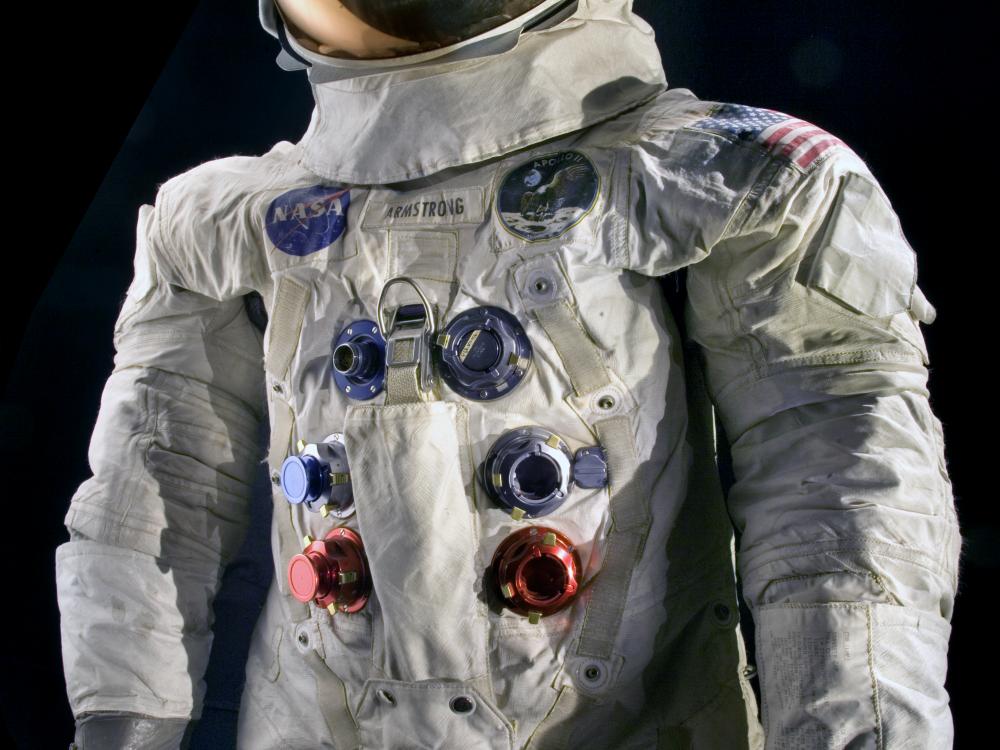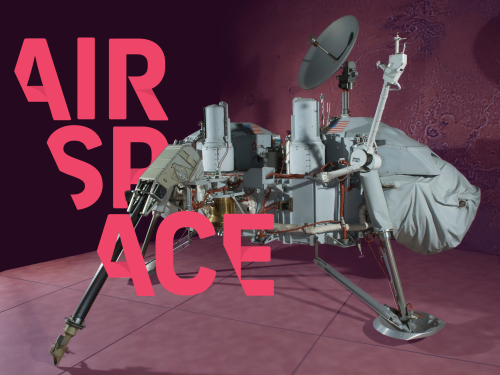
Help Us Write the History of Armstrong’s Spacesuit
Jul 19, 2016
Today, Neil Armstrong’s Apollo 11 helmet and extravehicular activity (EVA) gloves go on public display at the Stephen F. Udvar-Hazy in Chantilly, Virginia. The complete spacesuit will go on display in time for the 50th anniversary of the Moon landing in 2019, completing our campaign to #RebootTheSuit.
View of exhibit "Neil Armstrong's Apollo 11 Visor and Gloves," featuring flown Apollo A-7L spacesuit extravehicular visor and gloves in the James S. McDonnell Space Hangar at the National Air and Space Museum's Udvar-Hazy Center, Chantilly, Va.
While the future of the spacesuit is quite certain, it is its past that has us intrigued. During our research and documentation, we realized that very few photos exist of the spacesuit prior to 1976.
We know the spacesuit had a full life before 1976. It, of course, spent some time on the Moon. It also went on a whirlwind, 50-state tour along with the Command Module Columbia. Between 1972 and 1976, the spacesuit was displayed at the Smithsonian’s American Arts and Industries Building. And, finally, it was placed in our Apollo to the Moon gallery until 2006.
The gloves have spent a little more time traveling. They were separated from the suit and have traversed the globe over the years.
One of our goals for this conservation project is to create a concrete timeline of the spacesuit’s condition and to document any historical repairs. To do that, we need your help.
Have You Seen This Spacesuit?
Dig through your files, page through your scrapbooks, or pilfer your grandparents’ memorabilia and help us find photographs, newspaper clippings, or anything that shows the spacesuit on display.
We’re looking for photos of the spacesuit from its national tour beginning in 1970, the gloves and helmet on later tours, and the spacesuit on display at the Smithsonian between 1971 and 1976. We'd also like photos of the command module Columbia from the 50-state tour.
You can help our experts conserve Neil Armstrong’s spacesuit simply by sending your photos to ArmstrongSuit@si.edu.
See the latest information on the conservation of the Armstrong spacesuit.
Related Topics
You may also like
We rely on the generous support of donors, sponsors, members, and other benefactors to share the history and impact of aviation and spaceflight, educate the public, and inspire future generations. With your help, we can continue to preserve and safeguard the world’s most comprehensive collection of artifacts representing the great achievements of flight and space exploration.



